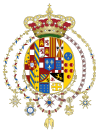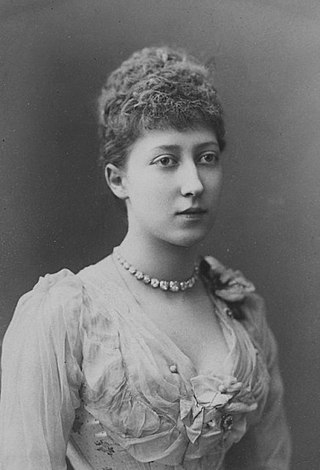
Louise, Princess Royal and Duchess of Fife was the third child and eldest daughter of King Edward VII and Queen Alexandra of the United Kingdom; she was a younger sister of King George V. Louise was given the title of Princess Royal in 1905. Known for her shy and quiet personality, Louise remained a low-key member of the royal family throughout her life.

Alexander William George Duff, 1st Duke of Fife,, styled Viscount Macduff between 1857 and 1879 and known as the Earl Fife between 1879 and 1889, was a Scottish nobleman and peer who married Princess Louise, the third child and eldest daughter of King Edward VII and Queen Alexandra.
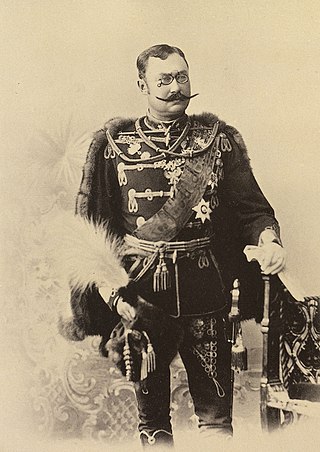
William IV was Grand Duke of Luxembourg from 17 November 1905 until his death in 1912. He succeeded his father, Adolphe. Like his father, William mostly stayed out of politics despite being vested with considerable power on paper by the Constitution.
Princess Elizabeth or Princess Elisabeth may refer to:

Infanta Maria Luisa of Spain was Holy Roman Empress, German Queen, Queen of Hungary and Bohemia, and Grand Duchess of Tuscany as the spouse of Leopold II, Holy Roman Emperor.

Maria of Jülich-Berg was the Duchess of Jülich-Berg, as the daughter of Wilhelm IV, Duke of Jülich-Berg and Sibylle of Brandenburg. She became heiress to her father’s estates of Jülich, Berg and Ravensberg after it had become apparent that her parents’ marriage would not produce any more children. In 1509, Maria married John III, Duke of Cleves. Their daughter, Anna, became the fourth consort of King Henry VIII of England.

Prince Tommaso of Savoy, 2nd Duke of Genoa, who is also known as Thomas Albert Victor of Savoy, was an Italian royal prince, nephew of Victor Emmanuel at the time the King of Sardinia, who on 18 February 1861 became the first King of a united Italy. His cousin and brother-in-law Umberto I and his nephew Victor Emmanuel III became subsequent kings of Italy.
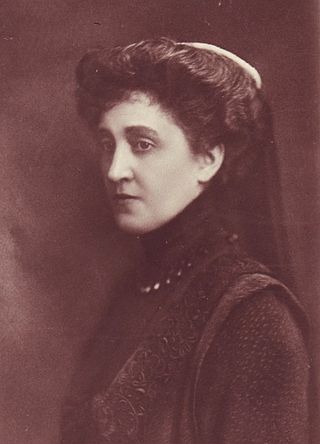
Infanta Marie Anne of Portugal was Grand Duchess of Luxembourg as the wife of Grand Duke William IV. She was the regent of Luxembourg between 1908 and 1912; first during the illness of her spouse, and then in the name of their daughter, Grand Duchess Marie-Adélaïde.
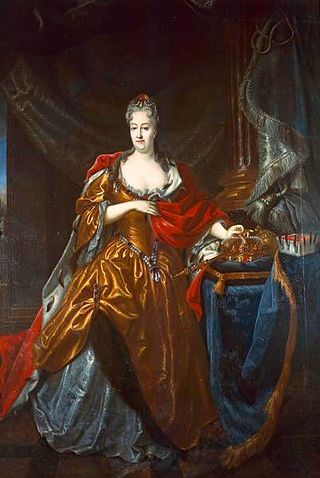
Christiane Eberhardine of Brandenburg-Bayreuth was Electress of Saxony from 1694 to 1727, Queen Consort and Grand Duchess Consort of the Polish–Lithuanian Commonwealth from 1697 to 1727 by marriage to Augustus II the Strong. Not once throughout the whole of her thirty-year queenship did she set foot in Poland-Lithuania, instead living in Saxony in self-imposed exile. Born a German margravine, she was called Sachsens Betsäule, "Saxony's pillar of prayer", by her Protestant subjects for her refusal to convert to Catholicism. Despite the allegiance of Christiane Eberhardine and her mother-in-law, Anna Sophie of Denmark, to Lutheranism, her husband and son, later Augustus III, both became Catholics, ensuring Catholic succession in the Albertine lands after a century and a half.

Karl Theodor, Duke in Bavaria, was a member of the House of Wittelsbach and a professional oculist. He was the favorite brother of Empress Elisabeth of Austria, and the father of Queen Elisabeth of the Belgians.

Elisabeth of Saxony was a Princess of Saxony who married the second son of the King of Sardinia. She was the mother of Margherita, Queen of Italy.

Amalie Marie Friederike Auguste, Princess of Saxony, full name Maria Amalia Friederike Augusta Karolina Ludovica Josepha Aloysia Anna Nepomucena Philippina Vincentia Franziska de Paula Franziska de Chantal, was a German composer writing under the pen name A. Serena, and a dramatist under the name Amalie Heiter. She was the daughter of Prince Maximilian of Saxony and Princess Carolina of Parma.

The House of Braganza-Saxe-Coburg and Gotha is a term used to categorize the last four rulers of the Kingdom of Portugal, and their families, from 1853 until the declaration of the republic in 1910. Its name derives from the four kings descended in a patrilineal line from King Ferdinand II of Portugal and in a matrilineal line from Queen Maria II of Portugal.

Georg, Crown Prince of Saxony or George the last Crown Prince of Saxony, was the heir to the King of Saxony, Frederick Augustus III, at the time of the monarchy's abolition on 13 November 1918. He later became a Roman Catholic priest and a Jesuit.
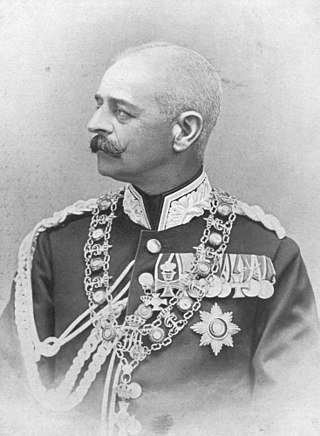
Frederick Augustus II was the last ruling Grand Duke of Oldenburg. He married Princess Elisabeth Anna of Prussia, daughter of Princess Maria Anna of Anhalt-Dessau and Prince Frederick Charles of Prussia. After her death, he married Elisabeth Alexandrine of Mecklenburg-Schwerin.

Princess Sophie Maria Friederike Auguste Leopoldine Alexandrine Ernestine Albertine Elisabeth of Saxony, Duchess of Saxony was the eighth and youngest child of John of Saxony and his wife Amalie Auguste of Bavaria and a younger sister of Albert of Saxony and George of Saxony. Through her marriage to Duke Karl-Theodor in Bavaria, Sophie was a member of the House of Wittelsbach and a Duchess in Bavaria.

Duchess Amalie Maria in Bavaria was born in Munich, Kingdom of Bavaria, the only child of Duke Karl-Theodor in Bavaria and his first wife Princess Sophie of Saxony. Amalie was a member of the House of Wittelsbach and a Duchess in Bavaria by birth. She was a member of the House of Württemberg, Duchess of Urach and Countess of Württemberg through her marriage to Wilhelm, 2nd Duke of Urach, the future King-elect of Lithuania. She was called by the French version of her name, Amélie, and was lifelong friends with her cousin, Archduchess Marie Valerie of Austria.

Princess Isabella of Bavaria was the third child and eldest daughter of Prince Adalbert of Bavaria and his wife Infanta Amalia of Spain. By her marriage to Prince Tommaso, Duke of Genoa, she became referred to as the Duchess of Genoa.
Baroness Elisabeth of Wangenheim-Winterstein was the wife of Charles Augustus, Hereditary Grand Duke of Saxe-Weimar-Eisenach, and the mother of Prince Michael, current head of the House of Saxe-Weimar-Eisenach.

Catherine of Mecklenburg, was a Duchess of Saxony by marriage to Henry IV, Duke of Saxony. She was the daughter of the Duke Magnus II of Mecklenburg and Sophie of Pomerania-Stettin.





